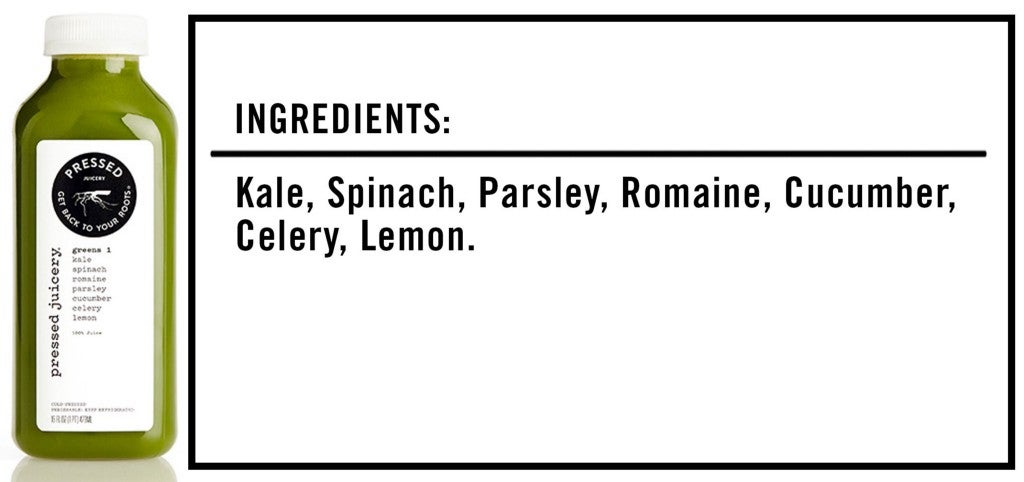We’re often told that you should never eat anything (or put anything on your body) if you don’t recognize everything on the ingredients list. But since most of us have no idea what xanthan gum or potassium benzoate are — or more importantly, what they’re doing to our bodies — we’re decoding the ingredients in the many things Americans put in (and on) themselves with the help of an expert.
This edition: “Greens 1” cold-pressed juice from Pressed Juicery, which is made from seven separate ingredients that we’ve broken down in the exact order they appear on their website.
But before diving into the ingredients, let’s talk about what cold-pressed juice even is. To gather cold-pressed juice, a massive hydraulic press pushes fruits and vegetables through a fine mesh to squeeze nearly all of the juice out of the produce. This is, by all accounts, more nutritious than juice made by the more traditional centrifugal juicer (the kind you might have hidden away in your hard-to-reach kitchen cabinet). That’s because centrifugal juicers incorporate a fast-spinning metal blade that twists against a mesh filter, separating the juice from the flesh of the produce by means of centrifugal force. Because the fast-spinning metal blade generates heat — which apparently renders the nutrients within juice less nutritious — cold-pressing is the current health-nut flavor of the month.
It’s also worth noting — unlike our other ingredient deep-dives — that the ingredients found in this juice are all-natural and easily recognizable. Still, this doesn’t necessarily mean cold-pressed juice is your healthiest option (which we’ll touch on shortly). But for now, let’s look at…

…The Ingredients
1) Kale: This leafy green is packed with fiber (which promotes digestive health), vitamin A (which promotes normal vision, the immune system and reproductive health) and vitamin C (a powerful antioxidant that prevents cell damage), according to Dana Hunnes, senior dietitian at the Ronald Reagan UCLA Medical Center.
2) Spinach: Spinach is high in iron (which encourages the production of oxygen-carrying red blood cells) and folate (which promotes cell and tissue growth).
3) Romaine: Similar to kale, romaine is another solid source of fiber and vitamin A, according to Hunnes.
4) Parsley: “Parsley just so happens to be high in antioxidants,” Hunnes says.
5) Cucumber: “Cucumber is a great source of water and hydration,” Hunnes explains. “It may also sometimes be used as a mild diuretic.” Because of this, cucumber is a good pick for those looking to lose weight.
6) Celery: “Celery is an excellent source of nitrates, which keep the arteries pliable [so blood can flow more easily to the heart],” Hunnes explains. “People who have sudden-onset heart attacks frequently take nitric oxide pills.” Celery is essentially the all-natural equivalent of such pills.
7) Lemon: This is a decent source of vitamin C.
The Takeaway
All of this sounds a hell of a lot better than, say, the nightmare ingredients list of a Dodger Dog. But while this juice is packed with healthy ingredients, Hunnes argues that you’re better off simply making a salad out of them. “Juicing these ingredients — for the most part — significantly reduces their fiber content and satiating power,” she explains. “We also don’t process liquid calories in the same way we process chewable calories.” As a result, you end up consuming way more calories than you might otherwise.
Hunnes also says that you can get more bang for your buck by simply purchasing these ingredients at the grocery store. “You could buy most of these ingredients — they might cost more than $5 (the price of a single bottle), but I guarantee that you’ll get significantly more than the amount found in a few of these bottles.”
Then again, if juicing is the only reliable way you can eat your fruits and veggies, by all means indulge.

